|
Solution in nuclear-based energy mix:
Powering Sri Lanka
by Prof.Monish GUNAWARDANA
The Government of Sri Lanka is planning to establish a Knowledge
Intensive Economy and transform the country into an emerging global
economic hub. Utilising our innovative human resources, strategic
geographic location and prevailing socio-political stability, we can
easily establish an industrialised economy.
|
Writer`s profile
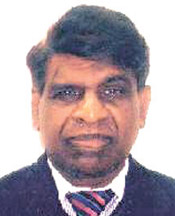 Prof. Gunawardana is a
product of the University of Peradeniya. He is Pro Vice
Chancellor at the International University of Management and
Governing Council and Member to the National Planning
Commission in Namibia. He served as development expert with
the United Nations, WFP, UNICEF, World Bank, GTZ and DANIDA
in Afghanistan, Pakistan, Sri Lanka, Laos, Cambodia and
Namibia. Prof. Gunawardana is a
product of the University of Peradeniya. He is Pro Vice
Chancellor at the International University of Management and
Governing Council and Member to the National Planning
Commission in Namibia. He served as development expert with
the United Nations, WFP, UNICEF, World Bank, GTZ and DANIDA
in Afghanistan, Pakistan, Sri Lanka, Laos, Cambodia and
Namibia.
His research interests and
publications are linked to Nuclear Energy, Economic Growth
and Information Technology. His research and writings on
nuclear energy could create a good response among
policy-makers and intelligentsia in Africa and other
developing countries. |
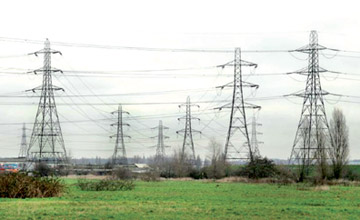 But a reliable supply of electricity is fundamental to realise that
goal. “When it comes to economic growth, the vital commodity is always
electricity.” (Peter Huber and Mark Mills. Bottomless Well. 2005).
Anyhow, to survive and thrive in Knowledge Intensive Economies, all
nations should be embedded with reliable and green energy
infrastructure. But a reliable supply of electricity is fundamental to realise that
goal. “When it comes to economic growth, the vital commodity is always
electricity.” (Peter Huber and Mark Mills. Bottomless Well. 2005).
Anyhow, to survive and thrive in Knowledge Intensive Economies, all
nations should be embedded with reliable and green energy
infrastructure.
Our power profile
Dependence on fossil oil (imported)-driven power generation and
accelerating O and M costs marked by the aging power utilities are the
key challenges in our power sector. Sri Lanka’s electricity generation
is heavily dependent on thermal sources that emit carbon dioxide (CO2).
In 2008, the installed electricity generation capacity was 2,500 Mega
Watts (MW). The thermal and hydro power plants generated 1,293 MW and
1,205 MW. Presently, renewable energy sources such as solar, wind and
bio-mass add insignificant amounts of electricity to the national power
supply. As per Table 1, the new thermal and hydro power plants will
generate 750MW in 2013.
The construction timeline of a Nuclear Power Plant (NPP) [i.e.
Westinghouse APR 1400 reactor/design life 60 years] is around eight
years and will cost nearly US$ 5 billion. The technology to build
nuclear plants is expensive, but the cost of electricity production is
lower than that of thermal power generation.
If we can initiate the construction process of the NPP by 2013, it
will add 1,400 MW to the national power supply by 2020. In addition to
the thermal, hydro and nuclear power sources, the proposed Sampur
coal-fired power utility will add another 1,000 MW. The aforesaid
developments in our energy sector are critical to ensure Sri Lanka`s
energy security and economic prosperity.
Power demand
Access to electricity in 2009 was 88 percent of the population; 12
percent of households still don’t have access to the power grid. The Sri
Lanka Electricity Board is planning to ensure 100 percent coverage by
2015. The National Socio-economic Development Agenda, which is known as
the Mahinda Chinthana Development Policy Framework (MCDPF), wishes to
establish a Knowledge Intensive Economy.
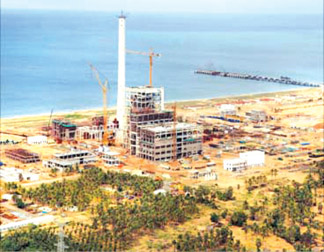
Sampur cal-fired power plant |
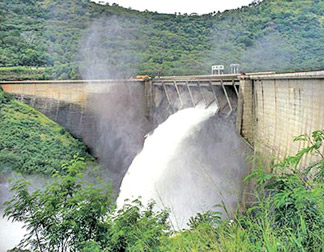
Victoria reservoir |
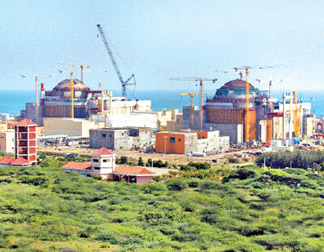
The nuclear power plant in Kudankulam, India |
Therefore, during the next decade, the electricity demand for
power-insensitive industries, service sector and households will grow
tremendously.
In relation to the anticipated economic growth, the demand for
electricity will increase by eight percent per year. The power needs for
the next decade could be forecast in the following manner.
Hence, to maintain a long-term sustainable GDP growth and global
competitiveness our power supply mix must be restructured according to
the growing demand.
Nuclear based energy mix
The foundation of the proposed Nuclear-Based Energy MIX (NBEM) is
nuclear power. Table 3 explains the composition of power sources related
to the proposed power supply mix that can meet the national demand by
2020.
A reliable and low-carbon power mix is vital to establish and operate
an industrialised economy.
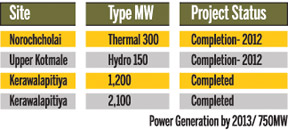 The writer assumes that our hydropower plants can maintain their
current generation capacity through a technologically advanced operate
and maintenance system. The writer assumes that our hydropower plants can maintain their
current generation capacity through a technologically advanced operate
and maintenance system.
Moreover, the proposed Sampur coal-fired power plant will generate
1,000MW. And, renewable` (i.e. solar, wind, bio-fuel and municipal solid
waste) contribution to the national power supply will be around 500MW.
By 2020, the Nuclear-Based Energy Mix will generate 5,400 MW and will
meet the projected demand (5,398MW). Even though our CO2 emitting
thermal plants generate 47 percent of power, by expanding hydropower
plants, strengthening renewable power sector and introducing clean coal
technology, we can reduce carbon emissions and establish an eco-friendly
energy sector.
Global nuclear power
According to the International Atomic Energy Agency (IAEA), countries
may have different reasons for considering nuclear power to achieve
their energy needs such as lack of indigenous energy resources, the
desire to reduce dependency upon imported energy, the needs to diversify
energy resources and carbon emission mitigation.
Accidents at the reactors in Russia’s Chernobyl and America’s Three
Mile Island damaged the credibility of nuclear energy in the last
century.
But, geo-politics, economics and global warming re-invited nuclear
energy to generate clean and reliable power. Its revival is significant
in highly industrialised countries. Presently, there are 440 nuclear
reactors in the world and they generate 16 percent of global electricity
needs.
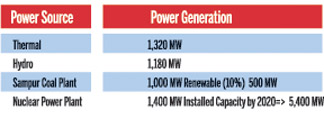 The share of electricity generated by reactors in some countries is
as follows: France=78 percent, South-Korea=38 percent, Germany=32
percent, Japan=30 percent, USA=20 percent, UK=19 percent, Russia=16
percent, Canada=15 percent, India=3 percent and China=2 percent. The share of electricity generated by reactors in some countries is
as follows: France=78 percent, South-Korea=38 percent, Germany=32
percent, Japan=30 percent, USA=20 percent, UK=19 percent, Russia=16
percent, Canada=15 percent, India=3 percent and China=2 percent.
Currently, Asian countries house 109 nuclear reactors and are
planning to build more. For instance, China has planned to construct 30
reactors and India is powered by 24 reactors. As of today, India is
constructing a massive (4,000 MW) nuclear power plant in Kudankulam.
Security concerns
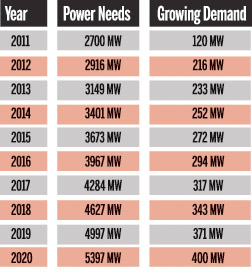 The spent-fuel of nuclear reactors is classified as High Level Waste
(HLW) and hazardous for tens of thousands of years. International Atomic
Energy Agency’s safety guidelines ensure the safety of nuclear power
generation. Also, modern safety measures for the disposal of HLW and
waste recycling are technically proven. The spent-fuel of nuclear reactors is classified as High Level Waste
(HLW) and hazardous for tens of thousands of years. International Atomic
Energy Agency’s safety guidelines ensure the safety of nuclear power
generation. Also, modern safety measures for the disposal of HLW and
waste recycling are technically proven.
Nuclear wastes can be sealed in corrosion-proof canisters and buried
500 metres under solid rock. Reactors are not atomic bombs.
Modern technologically advanced reactors (i.e. APR 1400-
Westinghouse) generate less nuclear wastes and possess auto-shutdown
mechanism that protect the plant from earthquakes and technical mishaps.
Anyhow, few nations keep more than 15,000 nuclear weapons that can
eliminate the entire human race within few minutes. Unfortunately, some
souls fail to understand that threat.
Next generation energy-mix
John Rich, President of the World Nuclear Association, once said:
“Humankind cannot conceivably achieve a global clean energy revolution
without huge expansion of nuclear power”. John McCain, US Presidential
Candidate, said, “We are too dependent on foreign oil and we should
dramatically increase nuclear energy”. These two statements summarise
the energy strategy of the highly developed countries. Hence, Sri Lanka
should not miss the bus. Let us establish a “Nuclear-Based Energy Mix”
by accommodating renewables and emerge as a rich and highly developed
country. |

